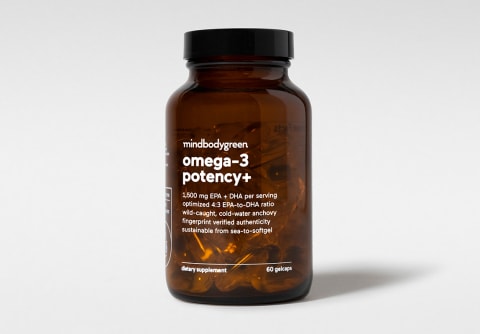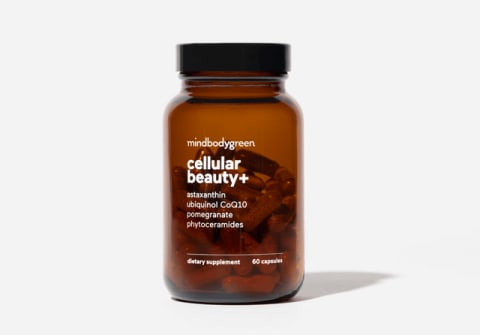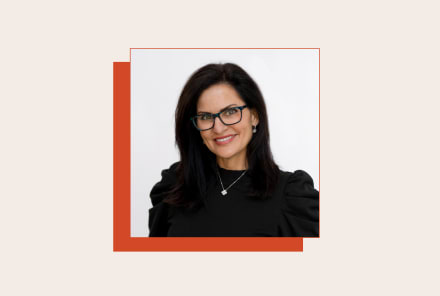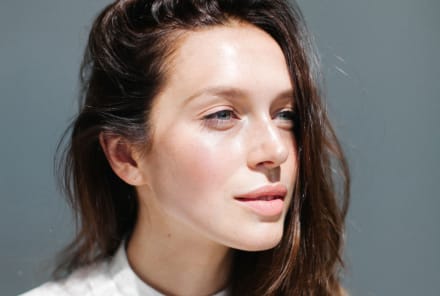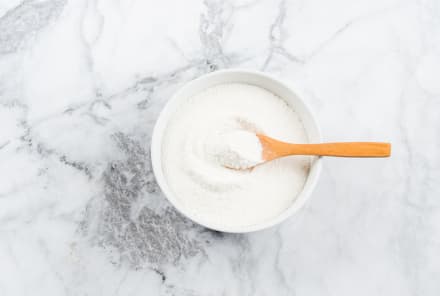Advertisement
If A Holistic Derm Could Bring *One* Food To A Desert Island, It Would Be This

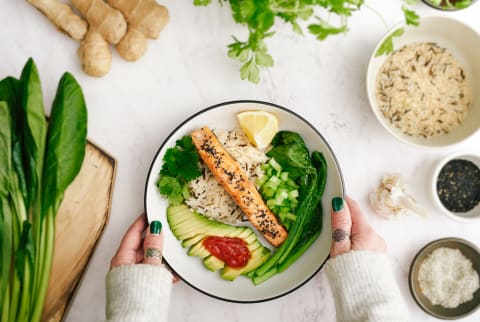
The list of foods for hydrated, supple skin is a long one; plenty of water-dense, high-fat, antioxidant-rich staples are beloved for their glow-inducing abilities. What's more, different foods can support certain skin goals—be it collagen production, hydration, antioxidant protection, or gut support—which is why experts recommend a balanced, nutrient-dense diet filled with skin snacks to deliver loads of complexion-supporting benefits.
However, we do occasionally ask these experts to play favorites, if only to streamline our shopping lists. This brings us to a recent TikTok video from board-certified dermatologist Whitney Bowe, M.D.: "If this dermatologist were stuck on a desert island and I could only have one food with me, it might just be salmon," she says.
The one food a dermatologist would bring to a desert island.
Wild-caught and sustainably sourced salmon is an excellent source of healthy polyunsaturated omega-3 fatty acids, which "keep the skin supple and hydrated," Bowe notes. In fact, experts routinely recommend increasing fatty-acid intake to help improve and protect the skin.* These omega-3 fatty acids, in particular, provide the building blocks to produce healthy cell membranes; as a result, they help improve the integrity of the skin barrier1 and help the skin retain its moisture.*
"[Salmon] also contains something called astaxanthin, which gives the salmon that pink-orange fleshy color," Bowe adds. Astaxanthin is a free-radical-fighting carotenoid powerhouse that is clinically shown to improve skin hydration, increase elasticity, improve skin texture, and reduce fine lines in as little as six weeks.* And since it's likely pretty sunny on that desert island: The carotenoid also has the ability to protect skin cells from UV light.* "Astaxanthin protects the skin from the inside out from those harmful rays while I'm on the desert island,"* Bowe agrees.
If you're familiar with astaxanthin, you likely know that the potent phytonutrient actually comes from green microalgae—when fish (like salmon!) eat this algae, the astaxanthin is what gives them a peachy pigment. So as one ingredient-savvy user comments on Bowe's video: "Why not just eat algae?"
It's a great point, says Bowe—people typically associate salmon with astaxanthin because the fish has a good amount of this super-antioxidant2, ranging from 6 to 38 mg/kg across different species and farmed (lower astaxanthin) versus wild-caught varieties. However, you would still need a hefty amount of salmon daily (around two to 12 fillets, depending on the type you're eating) to reap the carotenoid's skin-supporting benefits.*
That said: "You can absolutely take a supplement made from astaxanthin extracted from algae," notes Bowe. For example, our cellular beauty+ contains premium algal-sourced astaxanthin at a potent dose of 6 milligrams to reflect the current research on skin health3 and to leverage its wrinkle-fighting power.* So if Bowe could bring one food and one supplement to this desert island? We'd wager she'd keep this skin-care-focused formula close by.
The takeaway.
Salmon is a popular skin food among dermatologists, considering its load of omega-3s and astaxanthin. Add it to your grocery list, and pair the fish with other skin-supporting foods (broccoli, squash, avocado, etc.) for a well-rounded meal.
Watch Next
Enjoy some of our favorite clips from classes
Enjoy some of our favorite clips from classes
What Is Meditation?
Mindfulness/Spirituality | Light Watkins
Box Breathing
Mindfulness/Spirituality | Gwen Dittmar
What Breathwork Can Address
Mindfulness/Spirituality | Gwen Dittmar
The 8 Limbs of Yoga - What is Asana?
Yoga | Caley Alyssa
Two Standing Postures to Open Up Tight Hips
Yoga | Caley Alyssa
How Plants Can Optimize Athletic Performance
Nutrition | Rich Roll
What to Eat Before a Workout
Nutrition | Rich Roll
How Ayurveda Helps Us Navigate Modern Life
Nutrition | Sahara Rose
Messages About Love & Relationships
Love & Relationships | Esther Perel
Love Languages
Love & Relationships | Esther Perel
What Is Meditation?
Box Breathing
What Breathwork Can Address
The 8 Limbs of Yoga - What is Asana?
Two Standing Postures to Open Up Tight Hips
How Plants Can Optimize Athletic Performance
What to Eat Before a Workout
How Ayurveda Helps Us Navigate Modern Life
Messages About Love & Relationships
Love Languages
Advertisement

This Little-Known Supplement Helps Women Sleep & Decreases Signs Of Depression
Molly Knudsen, M.S., RDN

This Little-Known Supplement Helps Women Sleep & Decreases Signs Of Depression
Molly Knudsen, M.S., RDN
